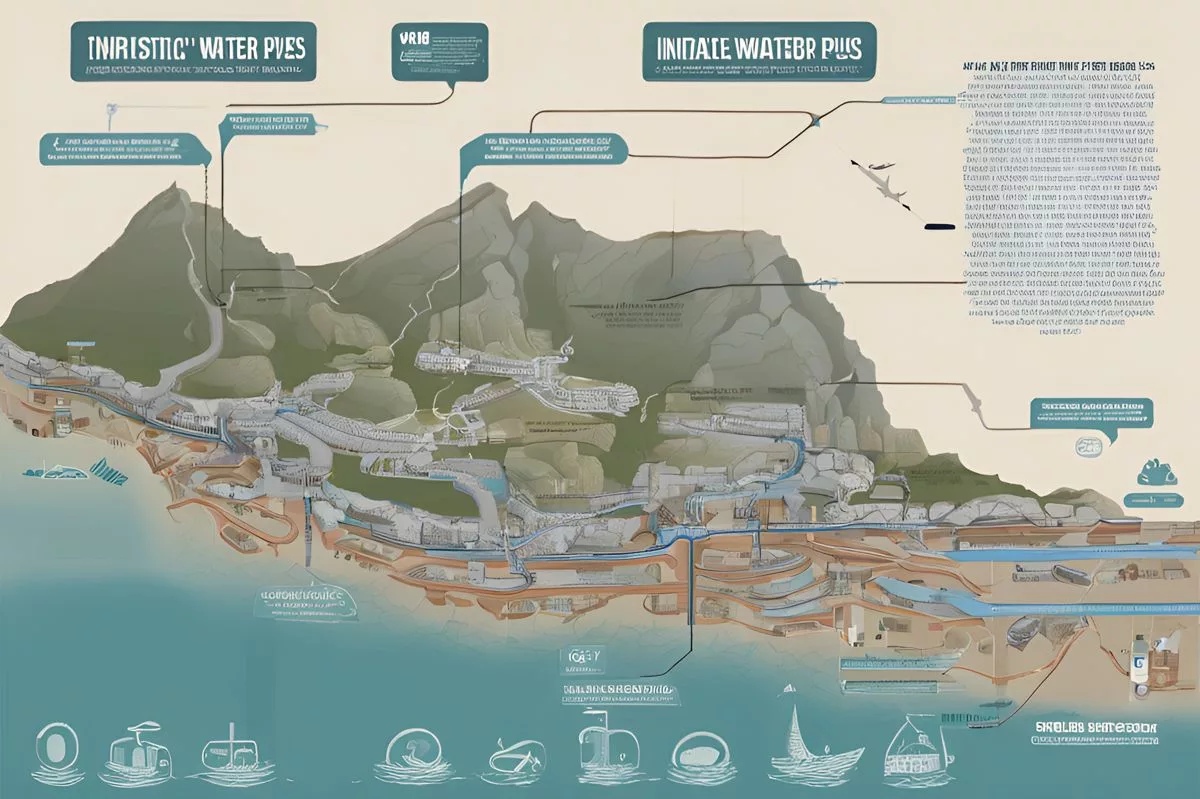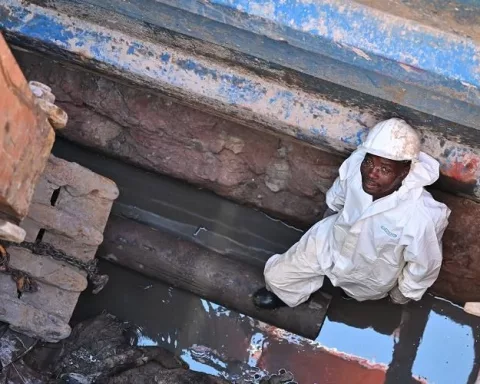Hout Bay and Llandudno are addressing their water crisis through a comprehensive pipe replacement program and emergency measures. The local government has committed R836.6 million for pipe replacement, with 3,300 meters already replaced. First Level Responder and maintenance teams conduct urgent repairs and replace sections of pipes to prevent pipe bursts. The community’s resilience and support are crucial in dealing with these short-term disruptions. Despite the challenges posed by the geographical setting and aging infrastructure, the collective fortitude and steadfast fellowship of the community demonstrate their unwavering spirit in overcoming the water crisis.
How is Hout Bay and Llandudno addressing their water crisis?
Hout Bay and Llandudno are addressing their water crisis through a comprehensive pipe replacement program and emergency measures. The local government has committed R836.6 million for pipe replacement, with 3,300 meters already replaced. First Level Responder and maintenance teams conduct urgent repairs and replace sections of pipes to prevent pipe bursts. Temporary water shut downs are necessary for safety precautions, and a rigorous testing process is implemented post-repair to confirm the water lines’ ability to withstand the pressure. The community’s resilience and support are crucial in dealing with these short-term disruptions.
Part I – The Onset of the Water Crisis
Dawn in Hout Bay and Llandudno, the scenic coastal settlements, welcomes the rhythmic beats of tools and the low hum of machinery. A dedicated workforce of water and sanitation specialists start their day, committed to tackling a pressing issue – the regular disruption of water services in these communities.
The root cause of these frequent services disruptions lies in the complex mesh of water pipes buried under the charming roads of Hout Bay and Llandudno. Over the years, the system has endured the continual wear and tear owing to an unforgiving cycle of decay. The relentless issues of high water pressure have intensified the aging infrastructure’s woes, leading to repeated pipe bursts and leaving the residents in the lurch for a consistent water supply.
A concerted effort by water and sanitation maintenance groups, working tirelessly for six straight days, has been the response to this escalating crisis. Their hard work is primarily visible in neighborhoods such as Penzance Estate, Berg en Dal, Scotts Estate, Baviaanskloof, Hanging Meadows, and the quaint enclosure of Llandudno.
Part II – Geographical Challenges and Solutions
One of the challenges contributing to this issue is the geographical setting of Hout Bay, located at considerable heights. This necessitates a high-pressure water distribution system for ensuring equal access to water for all residents. Regrettably, the once robust water pipes, now worn out by time, struggle to cope with the relentless high pressure.
Recognizing the persistent water issues as a compelling cry for help, the local government has committed a significant investment of R836.6 million to a comprehensive pipe replacement program. This initiative, planned for the current fiscal year, has already facilitated the replacement of 3,300 meters of water pipes along important routes such as Baviaanskloof Road, Campbell Street, and Scottsville Circle. A large-scale project for further pipe replacement in Victorskloof, Surcingle, Monterey, Almond, and surrounding roads is currently in progress, with an anticipated completion date in June 2024.
Part III – Emergency Measures and Community Resilience
In spite of these noteworthy efforts, the aged and pressurized water network is akin to a ticking bomb, with the risk of additional pipe bursts looming large. To mitigate this, First Level Responder (FLR) and maintenance teams are deployed every day to conduct urgent repairs and replace sections of pipes. This effort requires temporary water shut downs for safety precautions.
Beyond these preventive actions, a rigorous testing process is implemented post-repair to confirm the water lines’ ability to withstand the pressure balancing across a complicated network. This network includes a blend of new and old pipes, high pressure points, and sections being repaired or replaced.
The previous week has witnessed a hive of activity in response to heightening water outages. The most recent repairs, finished around 21:00 on Friday, 12 April, were focused on high pressure points along Andrews Road. Teams worked tirelessly to restore water supply to the affected areas. In parallel, a pressure release valve in Llandudno is receiving servicing to avert further water interruptions.
In light of these challenges, it’s critical for members of the community to adapt and plan for these temporary inconveniences. Staying updated with the City of Cape Town’s social media alerts and planning in advance can aid residents in dealing with these short-term disruptions. As the city’s emergency teams strive relentlessly to regain stability, the community’s resilience and support are indeed praiseworthy.
In this challenging situation, the collective fortitude and steadfast fellowship of Hout Bay and Llandudno inhabitants are truly laudable. As they grapple daily with water supply disruptions, their unwavering spirit resonates the powerful truth – together, we shall prevail.
1. What is the cause of the water crisis in Hout Bay and Llandudno?
The water crisis in Hout Bay and Llandudno is caused by the aging infrastructure and high water pressure, which has led to repeated pipe bursts and disruptions in water supply.
2. How is the local government addressing the water crisis?
The local government has committed R836.6 million for a comprehensive pipe replacement program, with 3,300 meters already replaced. First Level Responder and maintenance teams conduct urgent repairs and replace sections of pipes to prevent pipe bursts. Temporary water shut downs are necessary for safety precautions, and a rigorous testing process is implemented post-repair to confirm the water lines’ ability to withstand the pressure.
3. Which areas have already undergone pipe replacement?
Neighborhoods such as Penzance Estate, Berg en Dal, Scotts Estate, Baviaanskloof, Hanging Meadows, and the enclosure of Llandudno have already undergone pipe replacement. Important routes such as Baviaanskloof Road, Campbell Street, and Scottsville Circle have also had their water pipes replaced.
4. When is the anticipated completion date for the large-scale project for further pipe replacement?
The large-scale project for further pipe replacement in Victorskloof, Surcingle, Monterey, Almond, and surrounding roads is currently in progress, with an anticipated completion date in June 2024.
5. What emergency measures are being taken to prevent additional pipe bursts?
First Level Responder (FLR) and maintenance teams are deployed every day to conduct urgent repairs and replace sections of pipes. Temporary water shut downs are necessary for safety precautions, and a rigorous testing process is implemented post-repair to confirm the water lines’ ability to withstand the pressure.
6. How can the community deal with temporary water disruptions?
Staying updated with the City of Cape Town’s social media alerts and planning in advance can aid residents in dealing with these short-term disruptions. The community’s resilience and support are crucial in dealing with these short-term disruptions.












